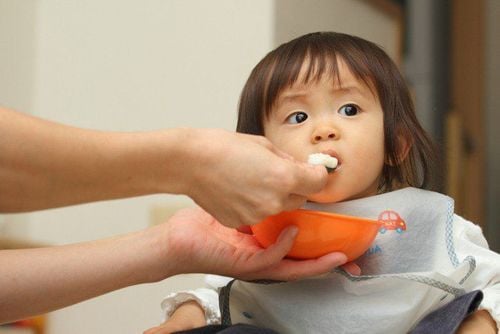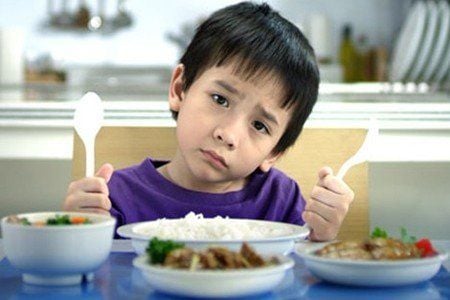This is an automatically translated article.
The article was professionally consulted by Dr., Doctor Phan Nguyen Thanh Binh - Head of the Department of Nutrition - Dietetics - Department of Pediatrics - Neonatology, Vinmec Central Park International General Hospital.Lack of energy and nutrients can make children malnourished. This condition can have serious consequences such as physical and mental retardation in children, weak resistance, increased morbidity and mortality in children under 5 years old.
1. What is childhood malnutrition?
Malnutrition is a lack of energy and nutrients that affects the normal process of life, activity and growth of the child's body.Child malnutrition can be classified into 3 types:
Underweight malnutrition: Due to malnutrition leading to a weight lower than the standard level for children of the same age and sex, which is determined when the child's weight is lower than the standard level of children of the same age and gender (under -2SD). The underweight category reflects persistent undernutrition as well as undernutrition at the time of assessment. Stunted malnutrition: Due to a long-term growth retardation resulting in a child not reaching the required height of a child of the same age in the reference population, defined as a height below the norm for children of the same age. age and gender (under -2SD). The stunting form reflects chronic growth retardation, which persists in the past, possibly starting as early as the fetal stage due to maternal undernutrition. Undernutrition: When the child's weight-for-height indicator falls significantly below the recommended value in the reference population, determined when the weight-for-height is lower than the child's standard for the same age group. age and gender (under -2SD). The emaciated form reflects acute undernutrition due to either not gaining weight or losing weight.
2. Causes of malnutrition in young children
Malnutrition can occur due to lack of supply, increased nutrient consumption, or both.Lack of supply:
Not providing enough food. Children are anorexic, not eating enough. Poor diet, inappropriate processing, lack of energy and nutrients. Increased consumption:
Children are sick, especially long-term illnesses. Gastrointestinal disorders - absorption. Intestinal parasitic infection. Loss of nutrients due to disease. In most cases, undernutrition occurs due to a combination of both mechanisms, both decreasing energy intake and increasing energy expenditure (for example, a child is sick but the mother is on a diet).

Trẻ ăn quá ít calorie trong ngày.
3. Effects of malnutrition on young children
Weakened immune system, increased risk of infections:Malnutrition and micronutrient deficiencies (deficiency of protein, iron, zinc, vitamins, ...) weaken the child's immune system, making them susceptible to infections , must use antibiotics regularly, causing anorexia, poor digestion, inability to absorb nutrients, making malnutrition worse. Disruption of bodily functions, causing many health problems:
Malnutrition will make the organs in the body disordered. The most severely affected organs are the liver, heart and kidneys which can lead to fatty degeneration of the liver, heart failure, kidney failure,.... Micronutrient deficiency also causes many health problems. For example, vitamin A deficiency causes corneal dryness, night blindness, adversely affecting children's vision; lack of iron, protein and some B vitamins causing anemia; lack of protein, calcium, zinc, vitamins A, D, K,... affects the development of bones, protein deficiency causes edema,... Physical growth retardation:
Effects on stature. Malnutrition affects the function of all body systems, including the musculoskeletal system, especially in the first 1000 days of life (fetal stage and first 2 years). Early and long-term malnutrition makes children grow up stunted, short in adulthood, increasing the risk of obesity later in life. Mental retardation:
Malnutrition affects the normal development of the brain in children under 6 years old due to a lack of substances necessary for brain and intellectual development of children such as fats, nutrients Powdered sugar, iron, iodine, DHA, Taurine,... Children who are malnourished are often slow, have problems with language, memory and social communication, leading to a decrease in attention and learning ability. , receive.

Trẻ hay bị rối loạn tiêu hóa.
4. Rehabilitation treatment of malnourished children
Treatment of acute conditions: Dehydration or systemic edema, electrolyte disturbances, acute heart failure, infections, parasitic infections, digestive-absorption disorders,... Supplementing deficient nutrients: vitamin A, iron, calcium, vitamin D, folic acid, multi-vitamins,... Raise the nutritional intake to the maximum level in accordance with the child's ability to digest and absorb, use foods rich in energy, special nutritional products,... Rehabilitation of malnutrition at home:Ensure adequate supply of energy, protein and nutrients to meet the needs of nutritional recovery and body development. Increase ration energy for daily meals if children cannot eat enough according to their needs by: Feeding many dishes in the same meal. Increase the number of meals a day if the child cannot eat much at one time. Feed as thick as possible, using moringa powders to loosen solid food while ensuring the consistency of the food. Increase energy-rich foods: add fat to your baby's food, use high-calorie foods. Fortified feeding after illness. Breastfeeding continues after 12 months. If breast milk is not available, choose a suitable milk substitute. Periodically monitor the nutritional status and health of children.

Để trẻ rửa tay thường xuyên bằng nước sạch














